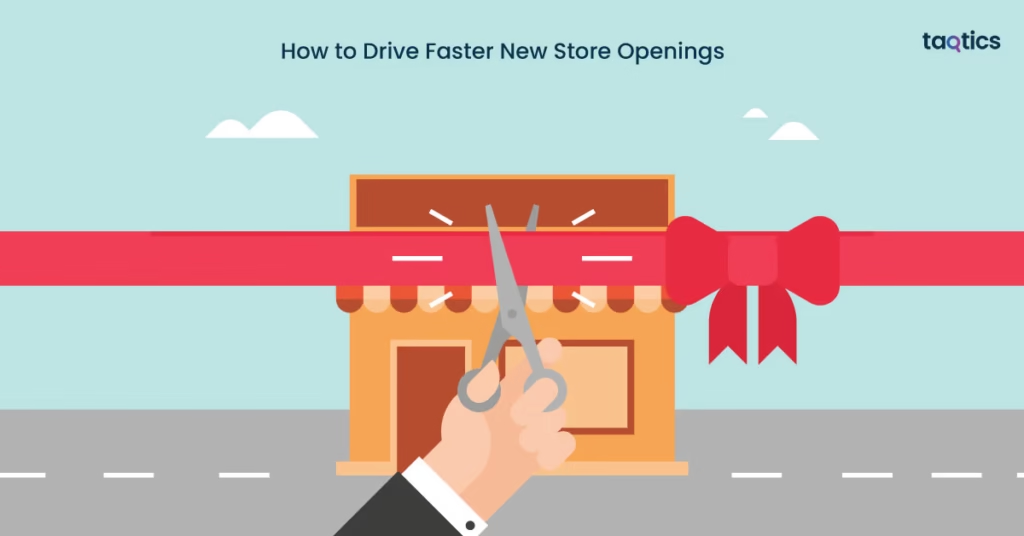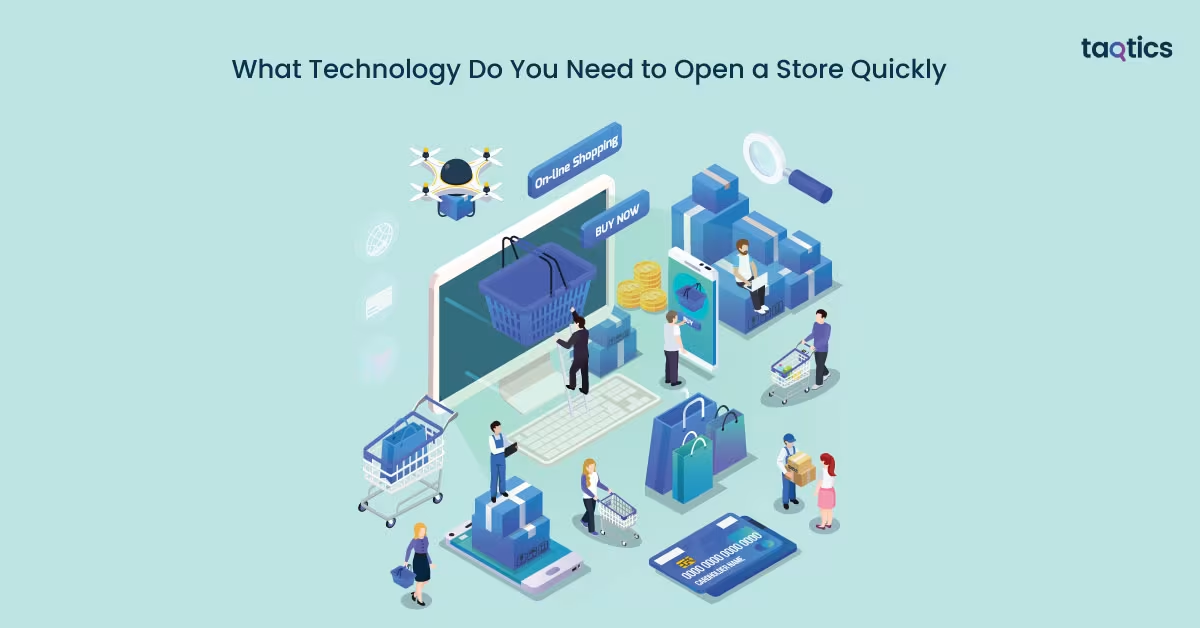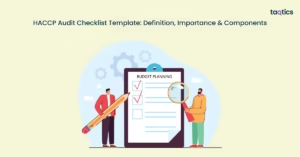How to Drive Faster New Store Openings

New store openings are a critical growth lever for retailers aiming to expand market presence and capture new customer segments. New store openings also contribute significantly to revenue generation, according to a McKinsey report, companies that accelerated store rollout by 20% saw up to a 15% increase in annual revenues due to early market entry advantages and faster return on capital.
However, the process is often slowed down by fragmented planning, permit delays, and lack of cross-functional alignment. To drive faster new store openings, brands must integrate real-time data, streamline site selection, automate workflows, and build agile teams. Retailers that leverage digital project management tools and predictive analytics can reduce store launch timelines by as much as 30%, ensuring quicker go-to-market and stronger competitive positioning.
What Is the New Store Opening (NSO) Process?
New store openings are comprehensive, cross-functional initiatives designed to bring a new retail location from concept to full operation. New store openings follow a defined lifecycle, concept, plan, build-out, launch, and review, to ensure timely delivery, customer readiness, and ROI optimization.
The NSO process begins with the concept phase, where market potential is evaluated and strategic objectives are defined. It then moves to the planning stage, involving site selection, permitting, vendor coordination, and budgeting. During the build-out phase, the store is physically constructed or renovated, with fixtures, technology, and merchandising installed. The launch phase includes staff training, inventory setup, and marketing execution. Finally, the review stage assesses performance, identifies gaps, and feeds learnings into future rollouts.
Retailers that standardize the NSO lifecycle can open stores 20–30% faster, according to a CBRE study, with brands like Ulta Beauty reducing opening timelines by nearly 40 days through centralized project management and real-time reporting.
Why Is New Store Openings Important?
New store openings play a pivotal role in a retailer’s growth strategy by driving both financial performance and brand expansion. They not only help businesses reach untapped markets but also enhance customer accessibility and competitive edge.
- Increased Revenue Opportunities: Each new location adds a new revenue stream. Studies show that physical retail still influences over 70% of all purchases, even in a digital-first world.
- Expanded Geographic Reach: Opening stores in new regions helps brands tap into previously underserved or high-growth markets.
- Enhanced Brand Visibility: A physical presence boosts awareness and trust, especially in areas where digital marketing alone may fall short.
- Improved Customer Engagement: Brick-and-mortar locations allow for experiential retail, which increases customer retention by up to 60%, according to Deloitte.
- Supply Chain Efficiency: Strategically placed stores can also function as micro-fulfillment hubs, improving last-mile delivery in omnichannel models.
New store openings are strategic investments that fuel long-term brand growth and customer connection. By prioritizing efficient rollouts, retailers can unlock greater market potential, drive profitability, and strengthen their competitive position.
How Do You Plan and Budget Effectively for a Fast Store Opening?
To plan and budget effectively for a fast store opening, you must start with a solid business plan. This includes defining clear goals, understanding the target audience, analyzing local competition, and projecting financials such as startup costs, expected revenue, and break-even timelines.
- Create phased budgets for each stage, which include site acquisition, design, build-out, staffing, and marketing, and help control spending while maintaining speed.
- Incorporate contingency buffers of 10–15% protects the project from delays due to permits, supply chain issues, or cost overruns.
- Use project management tools like Smartsheet, Asana, or Trello with pre-built NSO templates, which allow teams to track timelines, assign responsibilities, and flag delays early, helping retailers stay on schedule and within budget.
Effective planning and budgeting are the backbone of a successful and timely store launch. By combining a clear business strategy with structured budgets and digital project tools, retailers can accelerate store openings while minimizing financial and operational risks.
How Do You Choose the Right Store Location?
To choose the right store location, businesses must undergo data-driven site selection, analyzing key factors like local demographics, foot and vehicle traffic patterns, competitor proximity, and zoning regulations to ensure the location aligns with their brand and customer base.
Use Data-Driven Site Selection
Start by leveraging data to guide your decision-making. Analyze local demographics to ensure your target audience, based on age, income, preferences, and buying behavior, is present in the area. Traffic data, both pedestrian and vehicular, gives you an estimate of daily exposure and potential footfall. Understanding competitor proximity helps identify whether the area is already saturated or presents an opportunity to fill a gap in the market. Zoning laws and municipal regulations must also be reviewed early, as restrictions on signage, parking, or store use can delay or prevent store operations entirely.
Evaluate Visibility and Accessibility
A location’s visibility directly impacts brand awareness and walk-in traffic. Sites along main roads, intersections, or high-visibility corners are ideal. Accessibility is just as important, consider whether customers can easily enter the store, park nearby, or reach it via public transport. A store that’s difficult to reach often underperforms, even if it’s in a high-traffic zone. Evaluate sidewalk access, wheelchair access, and traffic flow patterns to optimize convenience.
Assess Co-Tenants and Surrounding Businesses
The surrounding business environment matters. Being near complementary businesses (e.g., a gym near a smoothie shop) can increase shared foot traffic and drive cross-shopping. Conversely, proximity to direct competitors might either benefit from increased attention to that category or create pricing pressure and divide demand. Retailers should study co-tenancy mixes in plazas or malls to see how well their store will fit in and stand out.
Weigh Real Estate Costs and Lease Flexibility
It’s critical to align real estate costs with your financial projections. High-rent areas may offer more traffic but can erode profitability if not offset by sales volume. Negotiate flexible lease terms, such as early exit clauses or options to expand, especially if entering a new market. This ensures the location remains viable as business needs evolve.
Evaluate Long-Term Growth Potential
Think beyond the present. Is the location in a growing neighborhood or a declining one? Check for nearby infrastructure developments, population growth forecasts, and commercial expansion plans. Areas with upward momentum offer higher long-term returns and brand visibility. According to industry research, stores opened in high-growth corridors see up to 20% stronger year-over-year performance.
By combining data analytics with real-world evaluation, retailers can identify store locations that not only align with their brand and customer base but also set the foundation for scalable, long-term success.
What Legal and Regulatory Steps Must You Follow?
The legal and regulatory steps that you must follow are a foundational part of any successful new store opening. Missing a single permit or violating a local ordinance can delay your launch or result in costly penalties.

1. Secure Business Licenses and Permits
To operate legally, you must first obtain all necessary business licenses and permits. This includes a general business operating license from the city or county where your store is located, as well as an Employer Identification Number (EIN) from the IRS for tax purposes and employee management. If your store sells physical goods, a seller’s permit or sales tax license is also required. In addition, you’ll need to apply for signage permits to install exterior branding and promotional signs, each of which must comply with local restrictions on size, height, lighting, and placement. Depending on your store type, you may also need specific licenses, such as food handler permits, health clearances, or alcohol sales licenses.
2. Follow Zoning and Land Use Regulations
Before selecting or leasing a space, it’s vital to confirm that the property is zoned for retail or commercial use. Zoning regulations vary by municipality and define what business activities are allowed in each area. For example, a café may be permitted in a mixed-use district but not in an industrial zone. You must also ensure that your business type and operations—such as hours of service, signage, or storage—comply with local land-use rules. Failing to meet zoning standards could result in permit denial or force you to relocate after signing a lease.
3. Ensure Compliance with Safety and Building Codes
All retail spaces must adhere to strict safety and building codes to protect customers and staff. These include fire safety systems like sprinklers, smoke detectors, and emergency exits, as well as meeting occupancy limits based on your store’s square footage and layout. Accessibility is also crucial—under the Americans with Disabilities Act (ADA), you must ensure that entrances, restrooms, and key store areas are wheelchair accessible. A final building inspection and approval from local authorities is typically required before you can receive a Certificate of Occupancy and begin operations.
4. Understand Local Environmental and Waste Regulations
Beyond safety and zoning, retailers are often subject to local environmental and waste disposal rules. This includes proper handling of solid waste, recycling practices, and restrictions on certain materials such as plastic bags or Styrofoam. Some cities also enforce green building codes or energy efficiency standards for lighting and HVAC systems. Staying compliant with these rules not only helps avoid regulatory penalties but also aligns your store with broader sustainability initiatives.
5. Work with Experts to Streamline the Process
Given the complexity and variation in legal requirements across locations, it’s wise to work with professionals who can help streamline compliance. Local permitting consultants can navigate municipal application processes, while legal advisors can ensure lease agreements and operational plans meet all legal obligations. Experienced contractors and architects can also design and build your store to meet code from the outset, saving time and minimizing the risk of failed inspections.
By thoroughly addressing each legal and regulatory step, you lay a compliant and risk-free foundation for your new store. This not only ensures a smooth and timely opening but also supports long-term business continuity and public trust.
How Do You Manage the New Store Opening Project Efficiently?
You can manage the new store opening project efficiently through structured coordination, proactive communication, and detailed oversight across departments.
- The first step is to assign a cross-functional team representing all key departments, including operations, HR, IT, marketing, and store design. Each function brings specialized knowledge that contributes to the store’s readiness, from staffing and training to systems setup and in-store branding. Appointing a project lead or store opening manager ensures accountability and centralized decision-making.
- To keep everyone aligned, host regular status meetings, ideally weekly or bi-weekly, throughout the rollout. These check-ins allow teams to report progress, flag bottlenecks early, and coordinate resources. According to a Retail TouchPoints study, companies that held recurring cross-team updates reduced project delays by up to 30%.
- Lastly, maintaining a risk register and milestone checklist is key. The risk register helps identify, track, and mitigate potential roadblocks (e.g., construction delays or permit issues), while the milestone checklist tracks key events like lease signing, inventory delivery, or employee onboarding.
Using cloud-based project management tools to monitor these elements in real time can further streamline collaboration and ensure the store opens on schedule and within budget.
What Technology Do You Need to Open a Store Quickly?
The technology you need to open a store quickly helps improve planning accuracy, enhance team coordination, and reduce delays. Leveraging the right tools can streamline everything from site selection to store setup, ensuring a faster, more efficient launch.

- Poject management tools like Smartsheet, Monday.com, or Asana help coordinate cross-functional teams, track timelines, and monitor progress across multiple tasks and stakeholders.
- Location intelligence platforms such as GIS (Geographic Information Systems) enable data-driven site selection by analyzing traffic patterns, demographics, and competitor proximity, helping you choose the most strategic location with speed and confidence.
- Core retail systems, such as point-of-sale (POS) platforms, inventory management tools, and store analytics software, are implemented once the site is selected. These systems ensure operational readiness from day one, enabling real-time tracking of sales, stock levels, and customer behavior. Cloud-based, scalable solutions are beneficial for quick deployment across multiple store locations.
- Virtual reality (VR) and digital floorplan design tools allow teams to visualize store layouts, optimize space, and simulate customer flows before physical build-out begins, saving time, resources, and costly post-construction changes.
By integrating these technologies early in the NSO lifecycle, retailers can not only accelerate the opening process but also ensure that new stores are more innovative, more efficient, and built for long-term performance.
How Do You Hire and Train Staff Before Opening Day?
You hire and train staff before opening day to ensure your team is fully prepared to deliver a seamless customer experience from the moment the doors open. Early recruitment is key, start hiring locally at least 4 to 6 weeks in advance to allow time for screening, onboarding, and scheduling. Partnering with local job boards, recruitment agencies, or community centers can help you attract talent familiar with the area and its customer base.
Once hired, training should follow a standardized onboarding program that includes both operational and cultural components. Use e-learning platforms and structured opening checklists to ensure consistent instruction across roles, from sales associates to shift managers. Incorporating modules on store layout, systems usage (POS, inventory tools), safety procedures, and product knowledge ensures operational readiness.
Most importantly, provide customer-service training focused on communication, empathy, and problem-solving. A strong in-store experience begins with well-prepared staff. Research shows that stores with trained, confident employees see up to a 20% boost in customer satisfaction and loyalty. By investing in early recruitment and structured training, you set the stage for a smooth, successful launch.
How to drive more traffic to stores?
To drive more traffic to stores, retailers must combine digital outreach with on-the-ground strategies that attract and engage local audiences.
- One of the most effective methods is using local marketing tactics such as optimizing your store listing on Google Maps, investing in localized SEO, and running geo-targeted digital ads on platforms like Facebook, Instagram, and Google. These tools help ensure your store appears in local search results and reaches nearby shoppers actively looking for your products or services.
- Another powerful approach is to leverage co-tenancy and anchor store synergies. Being located near high-traffic retailers, grocery stores, or entertainment venues can significantly boost walk-ins. Collaborating with these neighboring businesses on joint promotions or signage can increase shared visibility.
- Additionally, hosting promotional events, in-store activations, or partnering with community groups can create buzz and build brand awareness.
From weekend giveaways to charity tie-ins or local influencer meetups, such events give people a reason to visit and return.
How Do You Prepare Inventory and Merchandising for Opening Day?
You prepare inventory and merchandising for opening day by ensuring the right products are available in the right quantities and displayed to maximize appeal and sales. Begin with demand forecasting using market research, historical sales data (if available), and demographic insights to determine which SKUs are most likely to sell. This helps avoid both understocking and overstocking, ensuring shelves are full without creating excess inventory.
Next, implement a merchandising planogram that maps out product placement by category, brand, and traffic flow. Prioritize high-margin and high-demand items in key display areas such as end caps, entrance zones, and checkout points. Use visual merchandising techniques, clear signage, lighting, and clean layouts, to guide customers intuitively through the store and highlight featured products. Coordinate with suppliers and logistics teams to ensure timely delivery and allow a buffer for setup and quality checks. A well-stocked, visually appealing store not only creates a strong first impression but also drives early sales momentum.
How Can You Build Buzz Before the Grand Opening?
You can build buzz before the grand opening by creating excitement through a mix of public relations, digital engagement, and community interaction. Start with PR outreach and influencer partnerships, send press releases to local media outlets, and collaborate with local influencers to share sneak peeks or behind-the-scenes content. Their reach can amplify awareness and build anticipation among target audiences.
In parallel, launch digital marketing campaigns that include countdowns, teaser videos, and email invitations to your grand opening event. Promote these across your social media channels and website to generate curiosity and drive foot traffic. Hosting local preview events or pop-ups, partnering with community groups, and offering early-bird giveaways are also powerful ways to connect with the neighborhood and build momentum. Together, these efforts create a sense of urgency and excitement, ensuring a strong turnout on opening day.
How Do You Optimize Customer Experience from Day One?
To optimize customer experience from day one, you need to ensure that every aspect of the store environment is welcoming, efficient, and aligned with customer expectations. Start by training your staff to deliver exceptional service, ensuring they’re knowledgeable, approachable, and equipped to assist with any customer need. Clear signage, intuitive store layout, and accessible product displays also contribute to a smooth in-store journey.
Beyond the basics, leverage technology to measure and improve experience. Use tools like foot traffic counters, in-store Wi‑Fi analytics, and mobile tracking to understand customer movement patterns, dwell times, and peak hours. These insights help you fine-tune staffing schedules, optimize product placements, and identify any friction points in the store flow. Continuous monitoring from the start allows you to make data-backed adjustments early, setting the tone for consistent, high-quality service that drives loyalty and repeat visits.
What Should You Do After Opening to Improve Future Store Launches?
To improve future store launches after opening, you should conduct a thorough post-mortem review to evaluate what worked well and what needs refinement. Start by comparing forecasted vs. actual performance metrics such as sales, foot traffic, staffing efficiency, and inventory turnover. Analyzing these gaps helps identify whether initial assumptions were accurate and where operational adjustments are needed.
Additionally, gather feedback from both staff and customers. Frontline employees can offer valuable insights into the challenges they faced during setup and launch, while customer feedback highlights experience gaps and improvement opportunities. Use surveys, informal interviews, or digital feedback tools to collect this input. By capturing lessons learned and documenting best practices, you create a more effective, repeatable playbook that strengthens each future store opening.



